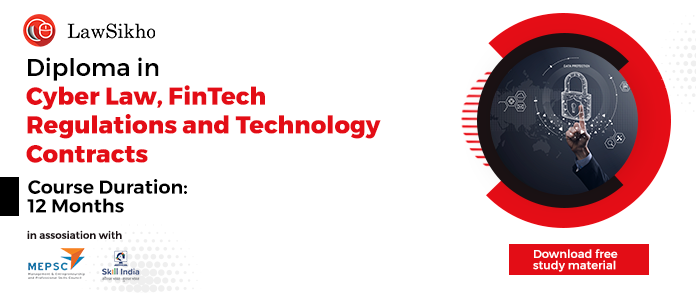This article has been written by Apeksha Choubey pursuing Diploma in US Tax Compliance and Paralegal Work and edited by Shashwat Kaushik. This article provides an overview of the Sustainability Reporting Maturity Model (SRMM).
This article has been published by Sneha Mahawar.
Table of Contents
Introduction
Sustainability reporting has become a prominent pillar for companies in the past few years due to an increase in awareness among consumers and investors to prioritise it in their purchasing and investment decisions. To help companies assess and improve their sustainability reporting practises, the Sustainability Accounting Standards Board (SASB) has developed the Sustainability Reporting Maturity Model (SRMM). This board aims to build strong reporting standards to ensure companies disclose material and relevant information to investors to make investment decisions. In this way, SRMM came into the picture and gained worldwide recognition in a short period of time.
Defining Sustainability Reporting Maturity Model (SRMM)
SRMM is a useful framework that requires companies to disclose, evaluate and improve their sustainability reporting practises. With the help of this model, companies can identify strengths and shortcomings, which further establishes a roadmap for improvement. It is very valuable for investors and other stakeholders interested in the company’s sustainability performance and reporting practises. It provides a structured approach for companies to assess and enhance their sustainability reporting practises, focusing on four key areas: governance and strategy, sustainability management systems, sustainability impacts, and sustainability reporting.
Levels of Sustainability Reporting Maturity Model (SRMM)
It is divided into three levels on account of maturity foundational, intermediate and advanced. Each level is explained briefly below:
Foundational level: At the very first level, a basic sustainability reporting programme is the main focus for companies, which includes identifying critical issues, setting goals and designing reporting processes. The qualitative data or basic metrics, are being considered for this analysis initially.
Intermediate level: At this level, companies have a more robust sustainability reporting programme in place with the help of more advanced metrics and Key Performance Indicators (KPIs) to track their performance and are reporting on a wider range of sustainability issues that ultimately impact the decision making of stakeholders.
Advanced level: Here, companies have integrated sustainability systems into their overall business strategy and are using data to make informed decisions across the organisation. Significant numbers of sustainability issues are included based on their materiality.
Benefits of using SRMM
The benefits of using the Sustainability Reporting Maturity Model (SRMM) are:
- Increased transparency and better accountability: Sustainability reporting is a successful way for companies to communicate their environmental, social, and governance (ESG) performance to stakeholders. It ensures reporting must be accurate, reliable and transparent, which can enhance their reputation and build trust with stakeholders.
- Enhanced stakeholder engagement: It emphasises stakeholder engagement as a key feature of sustainability reporting. With involvement of stakeholders in this reporting process, companies are receiving greater support and valuable input to improve their sustainability performance and priorities.
- Improved performance: This tool is used for improved and continuous improvement as it helps in identifying areas for improvement and tracking progress over some time. This can help them demonstrate a commitment to sustainability and drive long-term value creation.
- Risk management: Managing both external and internal risk for the companies in the current challenging environment is utmost important to survive in the market. With the help of SRMM, companies can easily identify and evaluate risk factors. Risk can be mitigated if identified at an early stage.
- Greater recognition: Better decision-making, stakeholder engagement and improved performance with help of sustainability reporting, etc. directly contribute towards increase in recognition and goodwill in the market and society at large. It creates a positive environment and shows a boom in share prices on the stock exchange.
- Improved credibility: It helps companies identify gaps in their sustainability reporting and improve the quality of their disclosures. This can increase the credibility of the companies with stakeholders, investors, customers and regulators.
- Compliance with standards: SRMM is based on international reporting standards, such as the Global Reporting Initiative (GRI) and the Sustainability Accounting Standards Board (SASB). Using the SRMM can help companies align their reporting with these standards and improve comparability with peers.
- Better decision making: It helps in taking more informed decisions through transparent sustainability reporting. Gap analysis and risk assessment improve the outcome, which subsequently allows stakeholders and investors to make better decisions.
ICAI releases SRMM version 1.0 in India
The Institute of Chartered Accountants of India (ICAI) regulates the chartered accountancy profession in India. ICAI set up a board called the Sustainability Reporting Standards Board (SRSB), which is working to develop a culture of accurate and reliable reporting of non-financial information about companies and build reporting metrics and disclosure requirements. Consequently, the Sustainability Reporting Maturity Model (SRMM) Version 1.0 has been developed as the foundation for benchmarking the sustainability reporting of Indian companies. It incorporated Sustainable Development Goals (SDGs), which encourage companies to endeavour towards developing their mechanisms with the help of SRMM and provide assurance that these standards have been complied with. Further in this section, we will see details of SRMM version 1.0.
SRMM version 1.0 is a self-assessment tool developed based on Business Responsibility and Sustainability Reporting (BRSR) formats and scoring mechanisms issued by the Committee on Business Responsibility Reporting of the Ministry of Corporate Affairs (MCA). As per this maturity model, four stages were defined to achieve the objectives of SRMM. Level 1 (Formative Stage), Level 2 (Emerging Stage), Level 3 (Established Stage), Level 4 (Leading by Example) of sustainability maturity for companies have been allotted definite scores based on total scores obtained by a company in any financial year as per the BRSR scoring mechanism.
Formative stage: In this initial stage, the BRSR score is up to 25% of the total score. Companies are involved in the process of identifying and meeting the requirements of SRMM in their businesses and strive to make systems to collect data and agree on disclosure formats.
Emerging stage: Here, the BRSR score is defined as >25% and up to 50% of the total score. In this stage, companies will set up mechanisms for accurate and reliable reporting and start the process of finalising policies for the same in a formalised way. It also built a robust internal control system to measure data and report in the required format.
Established stage: The BRSR score is fixed here as >50% and up to 75% out of the total score. In this stage, attention is more focused on the implementation part, where formal plans and policies are chalked out and placed in the system and align with the regular activities of business as part of the objectives set. Additionally, more stress is given to the compliance part and the qualitative aspects of reporting and the collection of data for the same.
Leading by example: The BRSR score is >75% out of the total score. In this stage, companies will put in all efforts to achieve the aim of having policies and systems that are operational and working as required and establishing themselves as market leaders. Leadership indicators have been given prime importance here by allocating a score of 75 to motivate companies towards target achievement.
At this point in time, it is very important to understand how the BRSR score mechanism is finalised. With the intention of stimulating companies to evaluate their sustainability maturity in every financial year, SRMM version 1.0 has been prepared in a straight forward way with moderate expectations. This scoring mechanism has defined various parameters and indicators for companies with different scaling and scoring methodologies. Different categories are defined, namely, A, B, C, and D, for scoping sectors in the SRMM purview and further created are two indicators; essential and leadership, with scores allotted. A small disclosure is mentioned below to showcase the BRSR scoring mechanism with an indicative list.
Section A: General disclosures- It will include general information about company, location of offices, employee categories, women employees, differently abled employees, CSR applicability, net and average profits of last 3 financial years, etc.
Section B: Management and process disclosures- It will contain disclosures related to companies policies and procedures, value chain partners, details of directors who are responsible for implementation of business responsibility policy, independent assessments of internal and external policy, channels to communicate with stakeholders, etc.
Section C: Principle wise performance disclosure- It will consist of the following principles:
Principle 1- Businesses should conduct themselves and govern themselves with integrity in a manner that is ethical, transparent and accountable.
Principle 2- Businesses should provide goods and services in a manner that is sustainable and safe; life cycle assessment for any 3 products/brands, actions taken to mitigate the advance; R&D and capital expenditure in technologies, etc.
Principle 3- Businesses should respect and promote the well-being of all employees, including those in their value chains, the percentage of employees covered under health and accident insurance, the percentage of employees covered by day care facilities, provident funds, gratuities, compliant resolution, etc.
Principle 4- Businesses should respect the interests of and be responsive to all their stakeholders.
Principle 5- Businesses should respect and try to protect and restore the environment. Companies have strategies to address global environmental issues, waste management policy, environmental risks, etc.
Principle 6- Businesses, when engaging in influencing public and regulatory policy, should do so in a manner that is responsible and transparent.
Principle 7- Businesses should promote inclusive growth and equitable development.
Principle 8- Businesses should engage with and provide value to their consumers responsibly; develop a system to resolve consumer complaints, data privacy, etc.
Conclusion
In conclusion, the SRMM is a significant tool for companies to assess and improve their sustainability reporting practises to stay competitive and meet stakeholder expectations. It provides a clear roadmap for continuous improvement and helps organisations align their sustainability reporting with global best practises and standards. It can help with better-informed decisions and drive continuous improvement in their sustainability performance.
From the perspective of India, SRMM Version 1.0 is a major step to measure and produce greater impact by companies on the environment and country. This roadmap will definitely ensure the attainment of Sustainable Development Goals (SDGs) at a higher speed. Further, SRMM Version 2.0 is in progress to build a stronger reporting mechanism based on the inputs received from companies after implementing SRMM Version 1.0.
References
- https://www.ifac.org/knowledge-gateway/preparing-future-ready-professionals/discussion/icai-releases-sustainability-reporting-maturity-model-srmm-version-10
- https://resource.cdn.icai.org/69633srsb55592.pdf
- https://www.cdsb.net/sustainability-accounting-standards-board-sasb#:~:text=The%20Sustainability%20Accounting%20Standards%20Board%20(SASB)%20is%20an%20independent%20non,decision%2Duseful%20information%20to%20investors
- https://icai.org/new_post.html?post_id=17221#:~:text=SRMM%20(Sustainability%20Reporting%20Maturity%20Model,companies%20with%20other%20international%20companies.
- https://taxguru.in/corporate-law/icai-releases-sustainability-reporting-maturity-model-version-1-0.html
Students of Lawsikho courses regularly produce writing assignments and work on practical exercises as a part of their coursework and develop themselves in real-life practical skills.
LawSikho has created a telegram group for exchanging legal knowledge, referrals, and various opportunities. You can click on this link and join:
Follow us on Instagram and subscribe to our YouTube channel for more amazing legal content.













